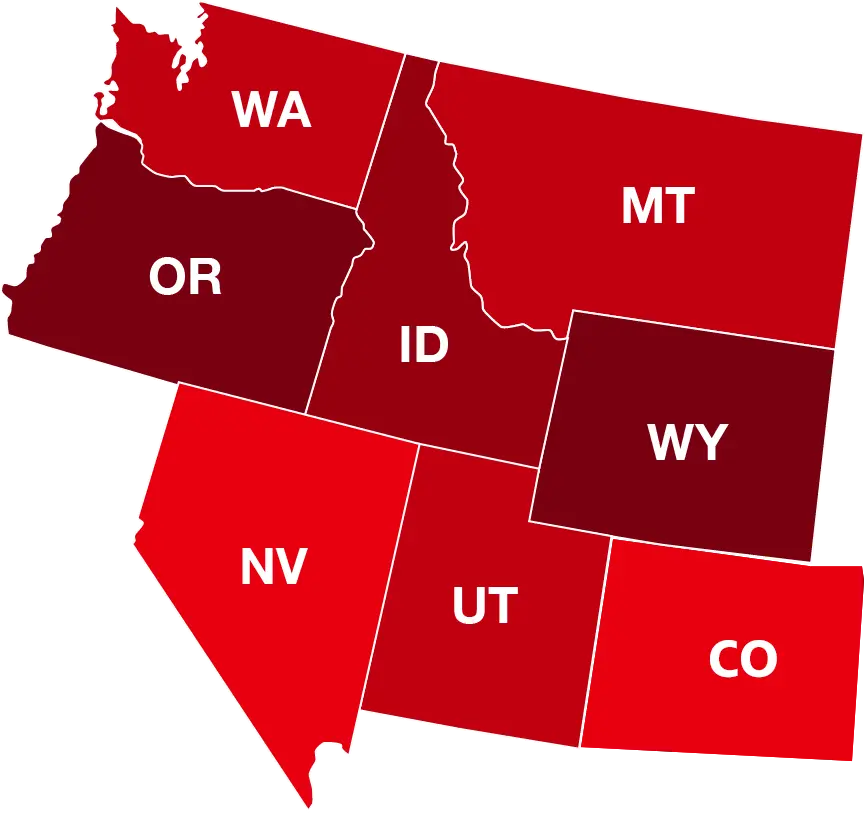Understanding the Most Common Shipping Container Sizes
Shipping containers come in a variety of sizes, each with unique advantages for different storage, shipping, and construction needs. Knowing the dimensions and uses of the most common shipping container sizes—10ft, 20ft, 40ft, 45ft, and 53ft—can help you select the right container for your project, whether you’re storing goods, creating a pop-up shop, or even building a custom structure. Let’s dive into the benefits and practical uses of each size!
10ft Containers
Compact and versatile for small projects, 10ft containers are the smallest in the lineup but pack a lot of potential. Their compact size and light weight make them easy to transport, ideal for anyone needing storage space on a small scale.
- Ideal for: Tool storage on construction sites, sports equipment storage for schools, mobile businesses, and pop-up shops.
- Specifications:
- External Length: 10ft | Internal Length: 9ft 2in
- External Width: 8ft | Internal Width: 7ft 7in
- External Height: 8ft 6in | Internal Height: 7ft 8in
- Max Payload: 19,530 lbs
- Why It Matters: The 10ft container is compact but still secure, making it perfect for small relocations (e.g., studio apartments) or temporary events where portability and security are key.
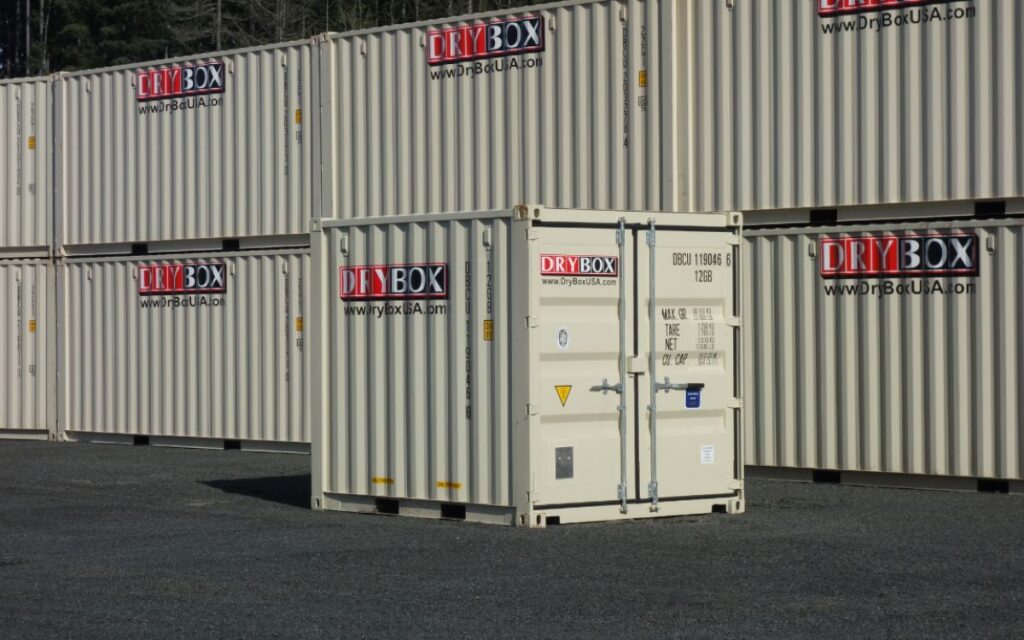
20ft Containers
The 20ft container is the industry standard, balancing space and portability. It’s commonly used worldwide and is versatile enough for personal storage or large-scale shipping.
- Ideal for: Overseas shipping, small mobile offices, tiny homes, and portable workshops.
- Specifications:
- External Length: 20ft | Internal Length: 19ft 4in
- External Width: 8ft | Internal Width: 7ft 8in
- External Height: 8ft 6in | Internal Height: 7ft 10in
- Max Payload: 66,139 lbs
- Why It Matters: Known as the “standard” container, the 20ft size is compact enough for convenient transport yet spacious enough to house four to six rooms’ worth of items, making it ideal for both residential and commercial moves.
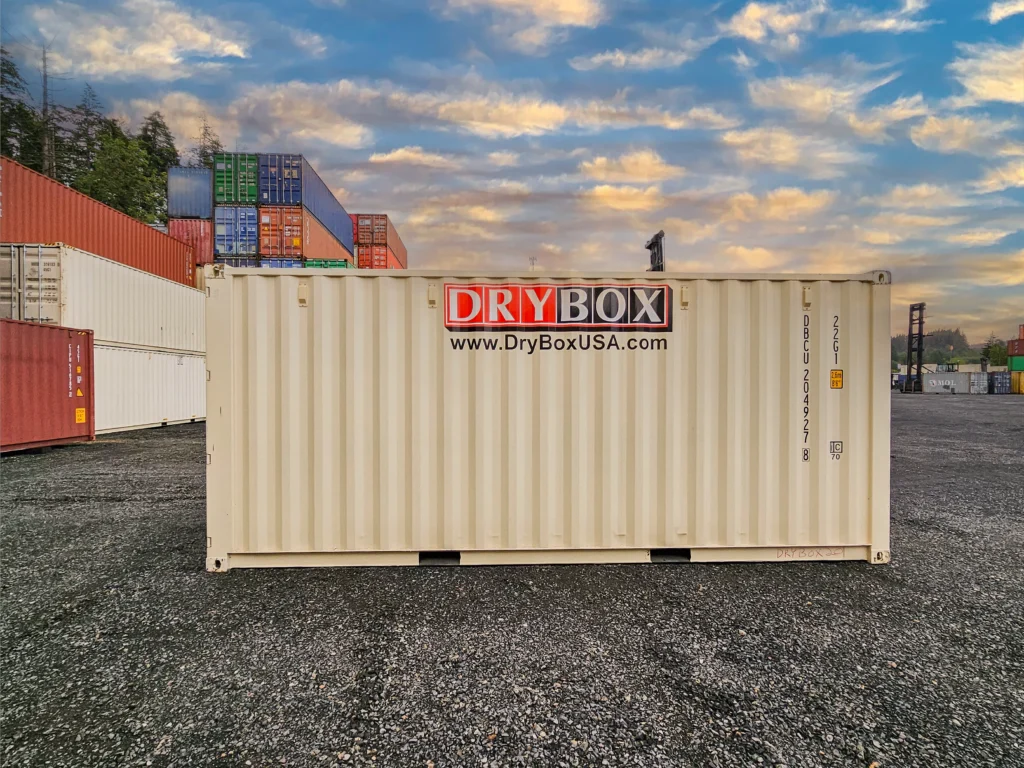
40ft Containers
With double the length of a 20ft container, 40ft containers offer expansive storage, ideal for transporting large quantities of goods or larger equipment.
- Ideal for: Storing or transporting construction machinery, large-scale storage, multi-room relocations, and building container homes.
- Specifications:
- External Length: 40ft | Internal Length: 39ft 5in
- External Width: 8ft | Internal Width: 7ft 8in
- External Height: 8ft 6in | Internal Height: 7ft 10in
- Max Payload: 57,759 lbs
- Why It Matters: The 40ft container is the go-to for bulk storage and high-capacity shipments. Construction companies use it for storing large machinery, and it’s also popular in residential projects for shipping container homes, where spaciousness is essential.
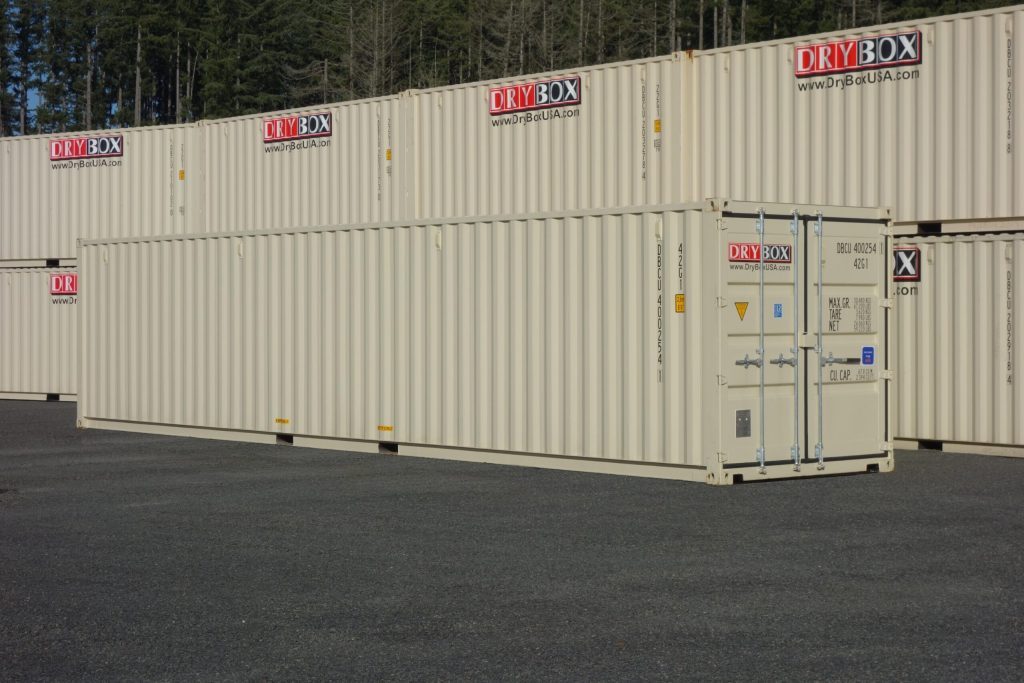
45ft Containers
The 45ft container provides maximum space with added height and 5ft of additional length compared to the 40ft standard shipping containers, making it ideal for projects with large storage requirements.
- Ideal for: Large-scale commercial storage, oversized shipments, modular homes, and office spaces.
- Specifications:
- External Length: 45ft | Internal Length: 44ft 4in
- External Width: 8ft | Internal Width: 7ft 8in
- External Height: 9ft 6in | Internal Height: 7ft 9in
- Max Payload: Similar to 40ft but with additional height for more storage.
- Why It Matters: The additional height and length provides extra storage capacity, making it useful for commercial and industrial applications, where securing a higher volume of goods is crucial.
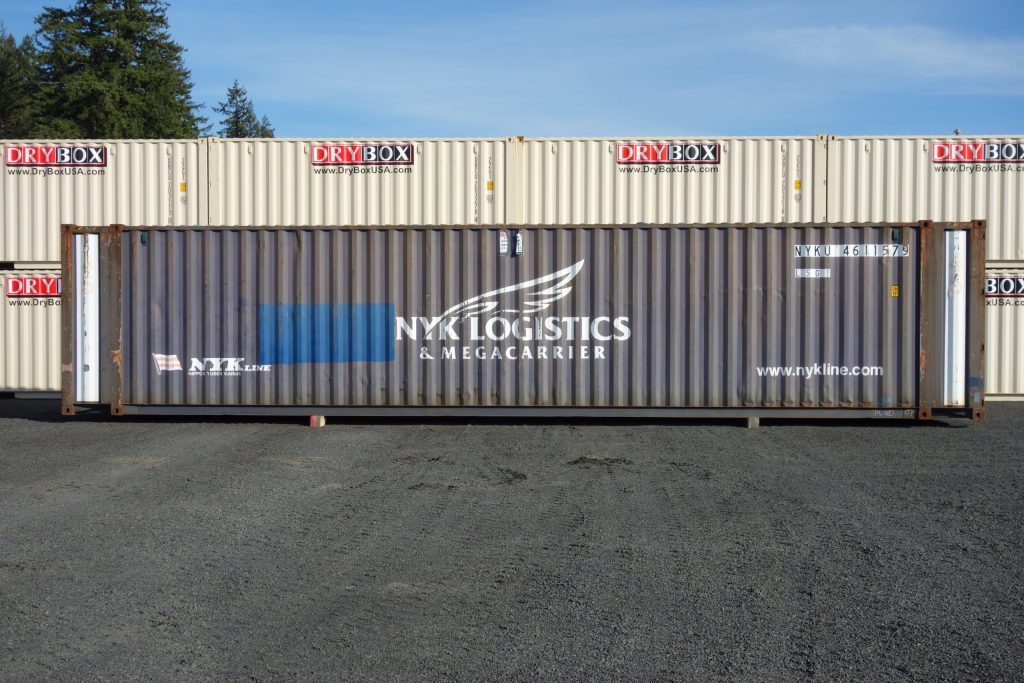
53ft Containers
The largest and most spacious containers available, 53ft containers offer the maximum storage space, with 60% more capacity than a standard 40ft container. Ideal for large events, oversized shipments, and industrial applications, these containers are almost like portable warehouses.
- Ideal for: Large-scale events, sustainable pop-up venues, multi-vehicle storage, and heavy-duty projects.
- Specifications:
- External Length: 53ft | Internal Length: 52ft 6in
- External Width: 8ft 5in | Internal Width: 8ft 2in
- External Height: 9ft 5in | Internal Height: 8ft 11in
- Max Payload: 56,090 lbs
- Why It Matters: This size is perfect for consolidating a large volume of goods, saving on shipping costs by reducing the need for multiple containers. It’s also ideal for creative ventures, like mobile restaurants or performance venues, where spaciousness and accessibility are key.
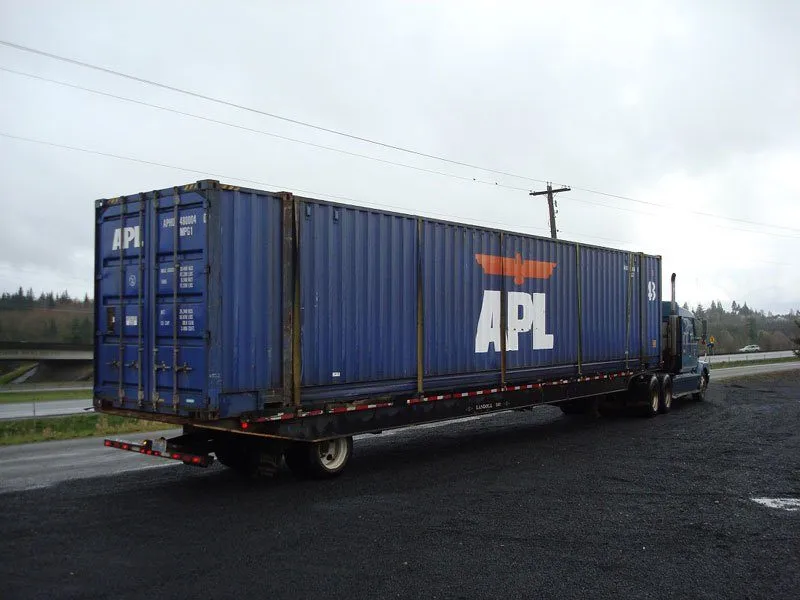
Shipping Container Sizes for Homes
When building homes out of shipping containers, most people opt for the 40ft size. This size offers a good balance between living space and manageability.
However, it’s essential to shop around for varying sizes and get the best deal, as prices can vary significantly from size to size.
Pro Tip:
Combining multiple containers can also create more complex home designs.
Consider maximizing your container home’s space with multiple containers if that option is financially feasible.
A 40ft container can be a dual living and dining room, a 22ft container is perfect for a luxury kitchen, and 8ft containers are large enough for a spacious main bath.
Practical Uses of Shipping Containers
Shipping containers are incredibly versatile and can be used to accommodate a variety of special projects, including:
Garages
Shipping containers can be converted into secure, weatherproof garages. Their sturdy construction makes them ideal for storing vehicles, tools, and other equipment.
The larger containers, such as the 40- or 45ft sizes, can accommodate multiple vehicles. A 53ft container makes a great auto repair garage if you’re a mechanic.
Storage
Whether you need to store household items, business inventory, or construction materials, shipping containers provide a secure and weatherproof solution. Storage on your property makes accessing personal items simple, as you can avoid trips to a traditional storage facility.
Schools
Schools often utilize shipping containers for storing event and sports equipment. Since modifications can be made to shipping containers, like adding HVAC systems and insulation, they can even be converted into cafeterias, computer labs, and classrooms.
Events
Shipping containers are incredibly versatile for events. They can be used for storing decorations and merchandise, as ticket booths, concession stands, and as office spaces or breakrooms for event staff.
Larger containers can even be used as indoor venues. One of the main benefits of using shipping containers for events is their portability, as they can be moved and used again for future events.
Farming & Greenhouses
Shipping containers work well on farms as they can safely house livestock and securely store farm equipment. Shipping container greenhouses are an innovative alternative to traditional farms, and one of the main benefits is that they can even be used in large cities.
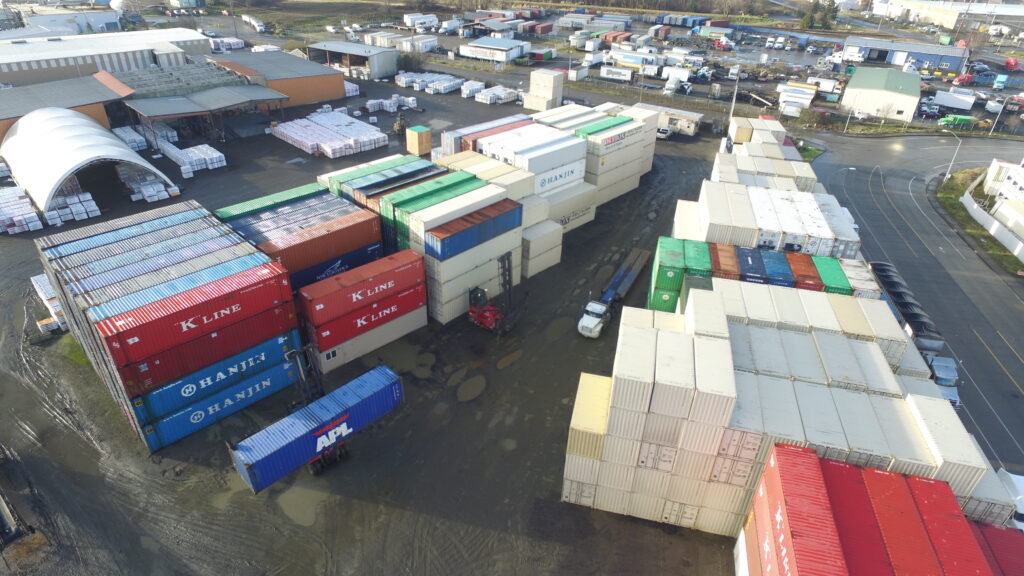
Why Shipping Container Sizes Matter
Shipping container sizes are more than just numbers—they impact how items are stored, how efficiently they are transported, and what projects are possible. Standardizing sizes also makes international trade faster and more reliable, as 20ft containers fit seamlessly into global port systems. Meanwhile, the larger 40ft, 45ft, and 53ft sizes enable large projects like container homes, mobile offices, and industrial storage.
Contact Dry Box Today
Looking for the ideal shipping container for your needs? Contact Dry Box to explore our range and find the perfect fit, whether you need compact storage, a mobile workspace, or a full-size shipping solution.

